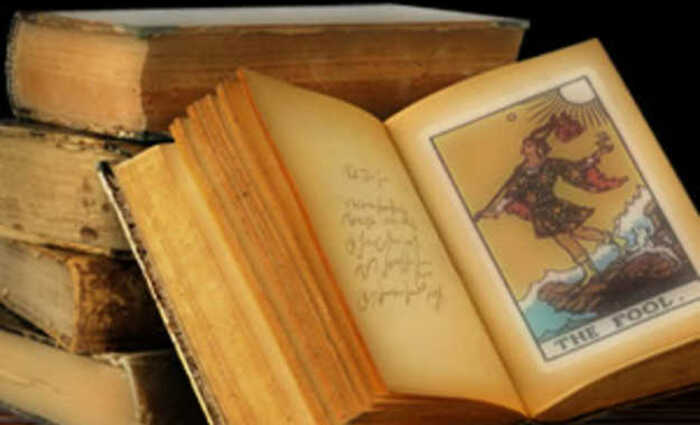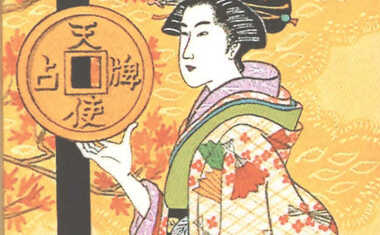
Doctrines of Catharism
The insightful doctrines of Catherism
Part II: Cathari Doctrine and Practice
We have a great deal of information on Catharism because of the Inquisition--specifically set up after the Albigensian Crusade to stamp out the heresy. As always, one has to look at the testimony of accusers with a critical eye. Charges of immorality, for example, were not based on evidence but on the prevailing theory of heresy (Moore, 1975). Heresy was evil and unnatural and therefore was expected to show moral and physical symptoms. Leprosy was often taken as evidence of heresy. But with Catharism we have some peculiarities that make the Inquisition records much more reliable than one would expect.
One must first recognize the profound difference between the initiated Perfecti and the ordinary Credentes. The Perfecti were literate and had a great respect for learning. Cathar medical doctors were prevalent in the courts of Provence (Runciman, 1947). When the church began to send Dominican preachers to convert them, the Cathars reacted by smuggling Perfecti into the prestigious School of Theology in Paris so they would be prepared to debate (Lambert, 1998). Dominicans in Italy sent letters to the Pope complaining about the lay heretics who read books and knew more theology than the priests.
The Perfecti understood their dualist theology and were deeply committed to its truth. When they were discovered by the Inquisition, many would stand proud and proclaim their ideas. Indeed, they considered martyrdom by the Inquisition as clear evidence that they alone followed the path of the early Christian martyrs persecuted by pagan Rome. Their testaments, consistent with each other and voluntary, seem a reliable source for Cathar doctrine.
The Credentes were largely illiterate, at least up until the 14/15th century. For the most part, Catharism was an urban phenomenon and the believers were craftspersons and artisans--the new middle class. There was no systematic religious education and they knew little or nothing about doctrine (Little, 1988). This posed a dilemma for the inquisitors since heresy was defined as errors in doctrine. But when they questioned suspects, neither the dangerous heretical Credentes nor the innocent faithful Catholics gave the right answers.
But while the Credentes knew little about doctrine, they were very much concerned with practice (Lansing, 1998). For most believers, the appeal of Catharism was not the logic of the doctrine. The appeal was the immediate presence of the Perfecti, men and women of obvious holiness, and in sharp contrast with the married priests exacting tithes. The advice of these "holy ones" seemed closer to the fundamental Christian message than the materialism of the Church. The Credentes were focused on the living practice of Catharism and therefore the Inquisition kept careful notes of these practices to use in future prosecutions. Wakefield and Evans (1969) provide translations of several treatises on doctrine and practices prepared by the church for the purpose of guiding future inquisitors. Aside from the occasional hyperbole, the treatises can be taken as reliable, because they needed to be diagnostic and accurate.
Theologically, the Cathars were dualists but there was variation in details. The two main varieties, radical and moderate, were inherited from the Bogomils (Runciman, 1947). The radicals believed there were two co-equal and co-eternal creative principles or Gods, one good and one evil. The Old Testament was written under the influence of the evil principle and was totally rejected (Leff, 1967). The moderates believed that there was one supreme God, and the evil creative principle was a fallen angel. The moderates also rejected most of the Old Testament but retained the Prophets and the Sapiential books. The focus for both groups was the New Testament and the two apocryphal books, "The Questions of John" and the "Ascension of Isaiah" (Leff, 1967) which they got from the Bogomils.
The Cathari were also Christians. They believed that Christ was sent to show humans how to free the spirit from the evil body. But Jesus couldn't be a God-man because that union would violate the basic incompatibility of God and evil matter (Runciman, 1947), nor could Mary be the Mother of God (Leff, 1967). Humans were spirits imprisoned in an evil body and surrounded by an evil world. Salvation consisted in denying satisfaction of all physical needs since to fulfill them led to the perpetuation of the evil material entrapment. There was no hell nor purgatory and no final resurrection of the body. The route to salvation was asceticism in this life, setting the stage for the liberation of the spirit when the body died.
Male and female was not a fundamental duality--it was an alien imposition (Lansing, 1998). Men and women were given equal status among Cathari because both were asexual spirits, equally entrapped. The male-female distinction was a false dichotomy, invented by an evil creator-- designed to perpetuate the entrapment of spirit through procreation. Sexual intercourse wasn't sacred--it was an abomination that permitted the abuse of woman by drawing attention away from the true spirit-matter duality and focusing attention on a false dichotomy.
Cathar practice was designed to draw the logical moral conclusions from this body of dualist beliefs. The route to salvation was a strict asceticism (chastity, poverty, fasting) that dismantled the spirit's obsession with the body. Marriage was firmly deplored (Davison, 1927; Runciman, 1947) and even meat, the product of propagation, was forbidden. According to one early testiment (Moore, 1975), "We value virginity above everything....We do not sleep with our wives, we love them as we would mothers and sisters. We never eat meat....We hold all our possessions in common."
The Cathari also incorporated doctrines and practices adopted, not from dualism, but from the other heresies of the middle ages. All oaths and swearing were forbidden. The Church was viewed as evil, the whore of Babylon. They rejected the sacraments, the priesthood, all Christian prayers (except the Pater Noster), the adoration of the cross, relics, icons, and any attempt to capture spirituality in a material manifestation (Leff, 1967). "The Church was in the lives of its members; nothing man-made of wood or stone had a part" (Wakefield and Evans 1991).
The Perfecti, initiated by the Consolamentum after years of preparation, were dedicated to the strict asceticism mandated by their dualist theology. The Credentes, the ordinary believers, could not be held to that standard. For them, normal commerce and marriage were deplorable but allowable. They had not been called to the spiritual life and must await a future incarnation.
The only way that the Credentes could achieve salvation in this lifetime involved a strange "escape clause." The initiation of the Perfecti that permitted the freeing of the entrapped spirit required a vow of strict lifelong ascetism which the ordinary believer could not maintain. Unless, of course, the vow were taken and the consolamentum administered just a few minutes before death (Runciman, 1947). This strange escapist practice had two long-lasting ramifications. First, it led to an obsessive interest in the prediction of and preparations for death. Second, it led to the absolute need to have Perfecti immediately accessible for the deathbed ceremony. For the ordinary believer, therefore, Catharism without Perfecti had no real appeal--it would simply be an abstract theology with a depressive message of inescapable entrapment.
References
Davison, E. S. 1927. Forerunners of Saint Francis. Houghton Mifflin, NY.
Lambert, M. 1998. The Cathars. Blackwell, Oxford.
Lansing, C. 1998. Power and Purity: Cathar Heresy in Medieval Italy. Oxford University Press, NY.
Leff, G. 1967. Heresy in the Later Middle Ages: The Relation of Heterodoxy to Dissent c. 1250-1450. Manchester Univ Press, Manchester.
Little, L. K. 1988. Liberty, Charity, Fraternity: Lay Religious Confraternities at Bergamo in the Age of the Commune. Smith College, Northampton, Massachusetts.
Moore, R. I. 1975. The Birth of Popular Heresy. Edward Arnold Ltd. (reprinted 1995, Medieval Academy of America).
Runciman, S. 1947. The Medieval Manichee. Cambridge University Press, Cambridge. (reprinted 1996).
van den Broek, R. 1998. "The Cathars: Medieval Gnostics." 87-108. van den Broek, R. & W. J. Hanegraaf, eds. 1998. Gnosis and Hermeticism; From Antiquity to Modern Times. State University of New York Press, Albany.
Wakefield, W. L. and A. P. Evans. 1969. Heresies of the High Middle Ages. Columbia University Press, NY. rptd. 1991.



